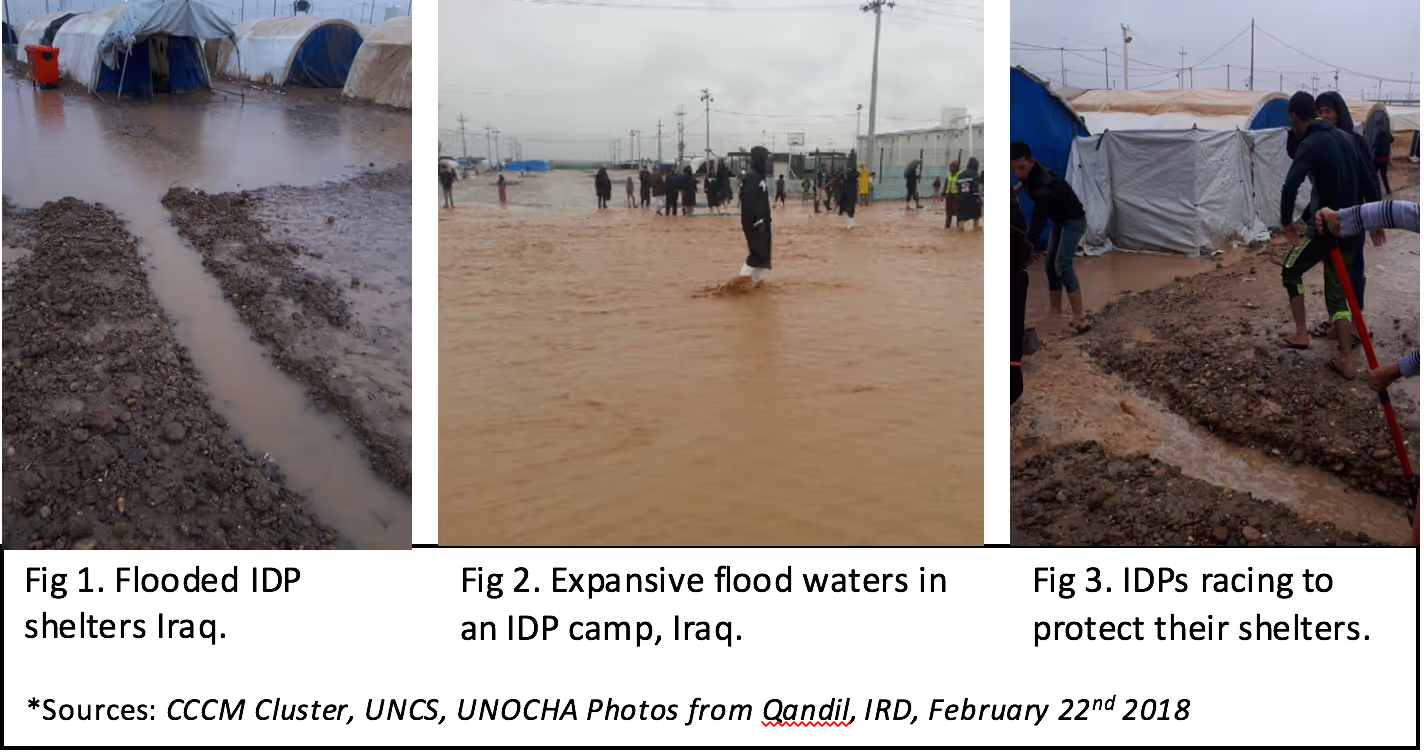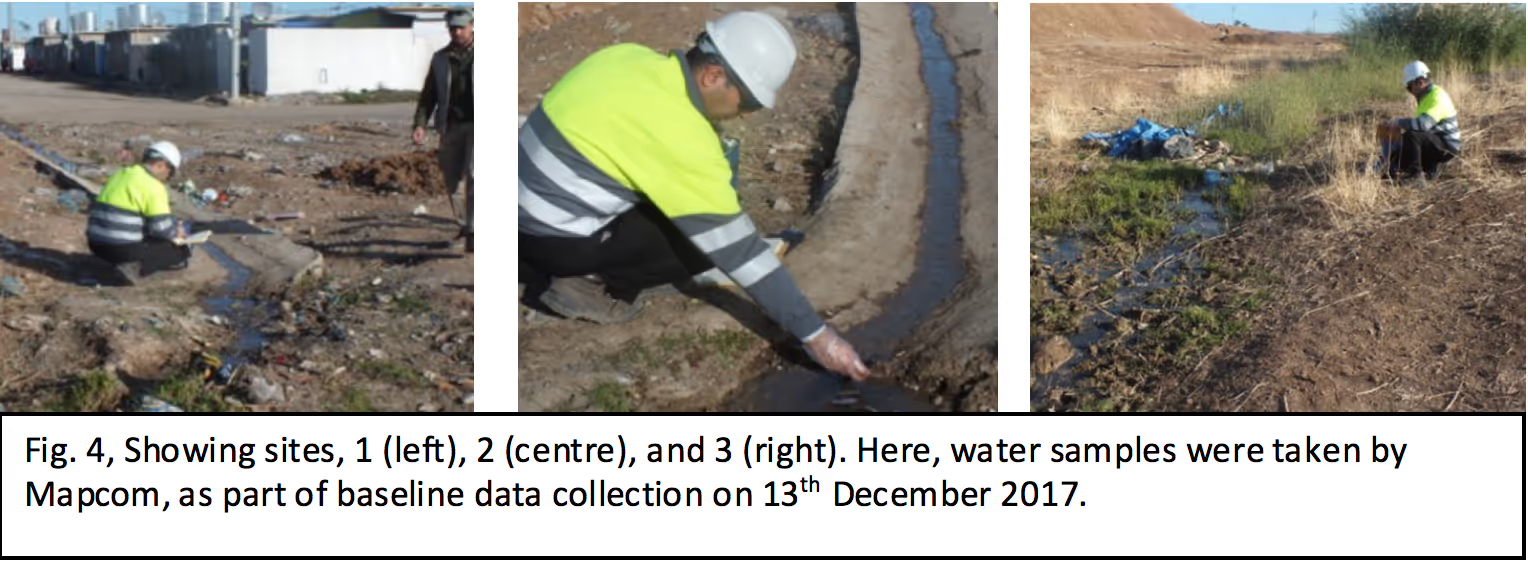‘What goes in‚ must come out’ – Flooding & Sampling

Sustainable drainage is concerned with ensuring water quality and quantity, whilst the site amenity and biodiversity are all harmoniously in balance and positively contributed to.
Nevertheless, outside of these parameters, there are external variables that influence, either positively or negatively, in achieving this equilibrium we so eagerly seek. Previous blogs have touched upon my Weltanschauung (worldview), and maybe something we both shared, in our understanding of what drainage is. But interestingly, it’s also something that’s shared by UNHCR, and is not uncommon.
Drainage first came into realisation in early Babylonian and Mesopotamian Empires in Iraq between 4000–2500 BC. For reasons associated with religious cleanliness, household water (grey water and with it surface water), was rapidly conveyed beyond the urban perimeter, downstream.
It came to my surprise of course that this is institutionally engrained, as drainage history has embedded itself in the use of conventional drainage systems. That is (at least in refugee camps in Kurdistan) reflected by UNHCR camp planners in engineered separate surface, grey and black (toilet) water, with some greywater flowing into the sewerage network and some of it out into open street drains, mixing with surface waters. It’s these open street drains that lead to flooding, when they are not properly designed, and do not allow for infiltration along any point of the drainage network until it dissipates beyond a certain point.
;

Who do we blame when we see images like this? Well, we don’t.
Flooding in Iraqi camps isn’t unheard of and is quite frequent, but without a shared sense of ownership, those who deserve the humanitarian right of aid, and the duty we are obliged to fulfil, fall short of being met. 33 IDP camps flooded in February this year in Iraq, affecting more than 200,000 people.
This project seeks to play some part in reducing scenes like this, by closing the knowledge gap on ownership and responsibility. It seeks to introduce systems that will make those displaced feel safer; surrounded by more sustainable, cost effective drainage solutions. On the surface these images suggested ‘water on the surface’, but in creating improved drainage systems, looking deeper at intangible issues such as spread of disease, poor sanitation and water pollution are not the immediate thought.
Just like they say, ‘everything that goes up, must come down,’ the same can be said for drainage, ‘everything that goes in, must come out’. That’s where Sustainable Drainage Systems (SuDs) comes to the rescue.
When we think of greywater, it is just that, and is composed of various anthropogenic (human) and natural influences, such as, pathogens, nutrients and (nitrogen and phosphorus). Surface water contributes to this, as it carries suspended solids and other matter from road surfaces and various other contact points. The important factor to note is that drainage water is no different from any other water supply and is always usable for some purpose within certain quality ranges.
;

Water sampling prior to the project design entailed understanding what the water going into our intervention site carries with it.
With the support of a local company, Mapcom, we carried out the testing at 3 sites (shown in the image above). We discovered some interesting results, that provide a baseline on which we aim to see changes with the installation of SuDs. Watch this video to see the water sampling in action.
When testing the physical and chemical parameters of the water samples, they were found to be largely neutral; pH values varied from 7.68 and 8.67, which are within the limits prescribed by the World Bank (1988) of 6 to 9. Magnesium, Total Hardness, Na, K, Cl and Sulphate etc. were within the normal range of drinking water. However, chemical oxygen demand (COD) and biological oxygen demand (BOD) were more concerning, with sample point two showing the highest variation from the norm, for BOD (50ppm) and COD (250ppm), of 470ppm and 966ppm, respectively. Bacteriological analysis suggested the water was contaminated (normal range - MPN 400 CFU/100mL) whilst all sites were above the limit (site 1: 2000; site 2: 1800; and site 3: 2,300 CFU/100mL).
The next blog adopts participatory solutions in dealing with water related encumbrances, through the eyes of refugees, their Weltanschauung and new understanding of drainage, SuDs.
Stay updated
Sign up for our newsletter to receive regular updates on resources, news, and insights like this. Don’t miss out on important information that can help you stay informed and engaged.
Explore Elrha
Learn more about our mission, the organisations we support, and the resources we provide to drive research and innovation in humanitarian response.